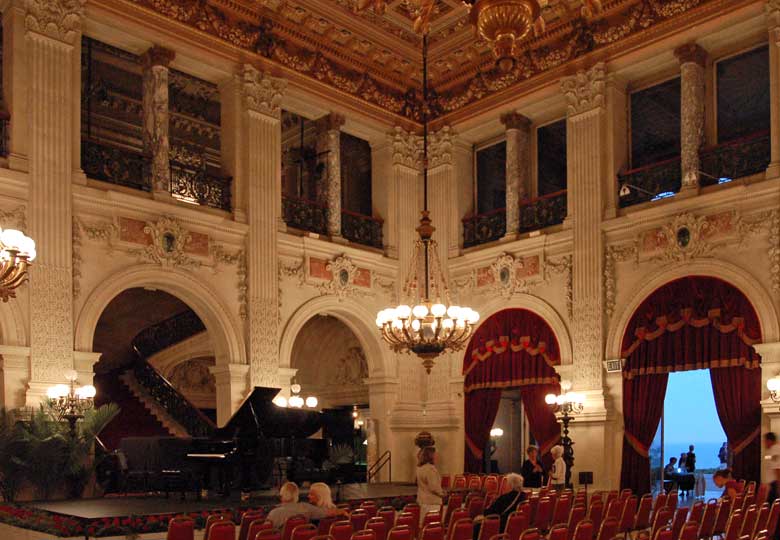Newport Classical opened its 55th Music Festival in grand style with the Sphinx Virtuosi ― “a dynamic and inspiring professional self-conducted chamber orchestra and serves as the flagship performing entity of the Sphinx Organization – the leading non-profit dedicated to transforming lives through the power of the arts.” The 18-member chamber orchestra comprises and gives voice to Black and Latinx artists and composers, from among whom they commission annually. Four of the six works on the evening’s programs were written specifically for Sphinx, with three of those being new works for the group, one of which was commissioned for this season and served as the opener. Habari Gani a welcome greeting in Swahili, inspired Quenton Blache (b. 2001) suitably channeled joy and exuberance. Sphinx delivered that brief ‘greeting’ with warm and ebullient sound which, even in the resonant space of the Breakers Mansion, conveyed the lightness, clarity and virtuosity of the pulsating rhythmic passages. Blache, an award-winning Los Angeles based cellist, who is also pursuing an advanced degree in film scoring, holds a minor in Chinese, and competes in national chess tournaments. Habari Gani, commissioned with a gift from the Keith and Renata Ward Emerging Composer Fund, has given him an opportunity to fuse his ancestral roots from Cameroon with his musical passions here in America.
Chilean American composer and guitarist Javier Farías (B. 1973) penned the only-slightly-longer Abran Paso, another new work for Sphinx. The composer writes of “…moving the strings of the guitar, the most representative instrument of Chile, to the strings of the orchestra, so that the richness of our musical traditions can be shared with the world.” Its more aggressive nature reflected the meaning of its title, “Make way,” a term used by master dancers and choreographers when they wish to take the floor. He wove the musical motives so as to depict the solo dancers demonstrating their art and then inviting the entire ensemble to contrast virtuosic and expressive solo instrumental lines with the tutti; he similarly twisted strands of polyphony against the homophonic (chordal) textures of the combined players, often imitating the strumming sounds of guitars or the stomping of dancing feet.
Publication is the “-Boston Musical Intelligencer”

